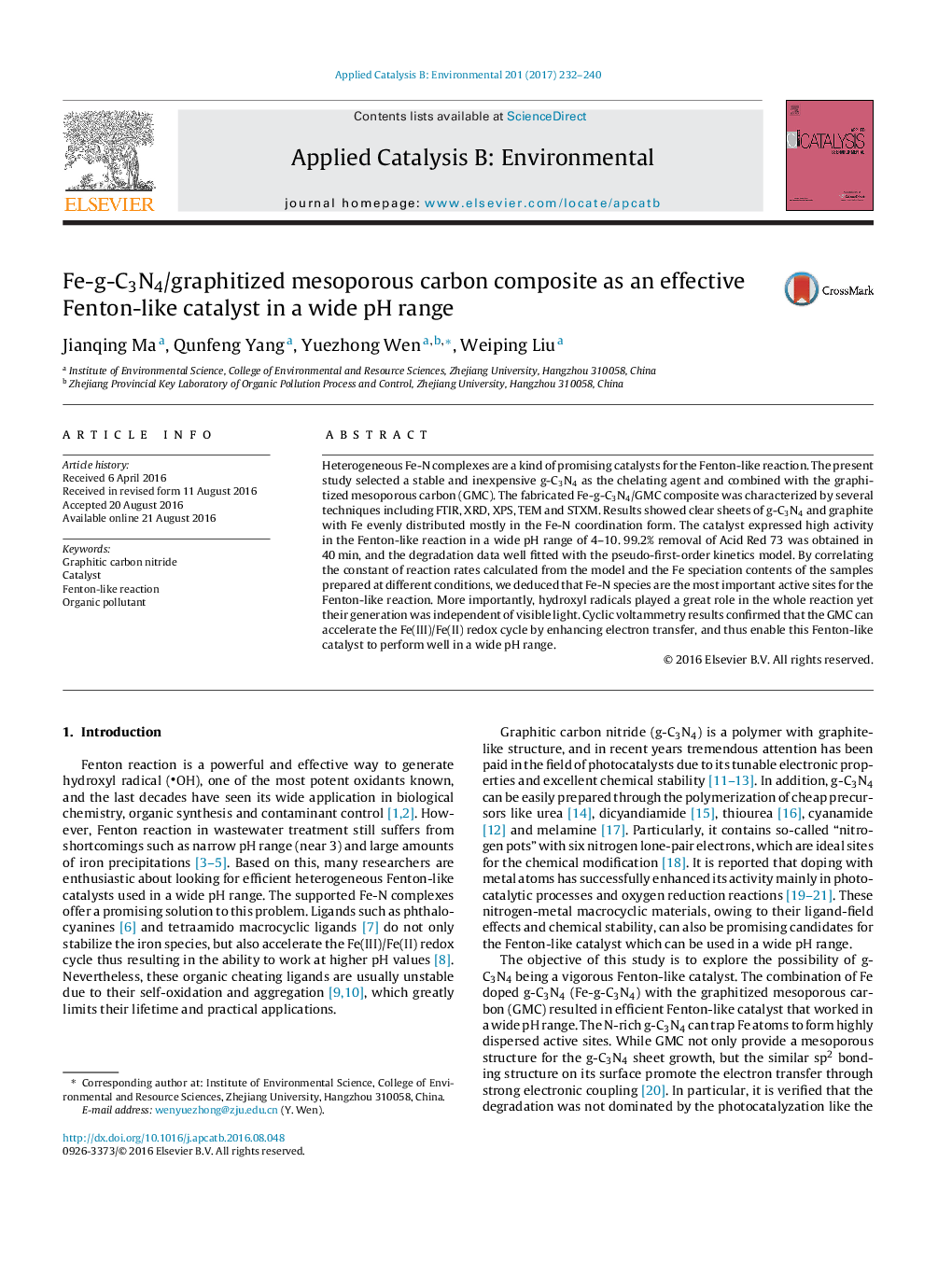| Article ID | Journal | Published Year | Pages | File Type |
|---|---|---|---|---|
| 6454995 | Applied Catalysis B: Environmental | 2017 | 9 Pages |
â¢Modified g-C3N4 is used as a Fenton-like catalyst in a wide pH range.â¢The prepared Fe-g-C3N4/GMC catalyst is adaptable to different organic pollutants.â¢Fe-N centers as active sites were proved.â¢The enhancement of electron transfer is responsive for these excellent performances.
Heterogeneous Fe-N complexes are a kind of promising catalysts for the Fenton-like reaction. The present study selected a stable and inexpensive g-C3N4 as the chelating agent and combined with the graphitized mesoporous carbon (GMC). The fabricated Fe-g-C3N4/GMC composite was characterized by several techniques including FTIR, XRD, XPS, TEM and STXM. Results showed clear sheets of g-C3N4 and graphite with Fe evenly distributed mostly in the Fe-N coordination form. The catalyst expressed high activity in the Fenton-like reaction in a wide pH range of 4-10. 99.2% removal of Acid Red 73 was obtained in 40Â min, and the degradation data well fitted with the pseudo-first-order kinetics model. By correlating the constant of reaction rates calculated from the model and the Fe speciation contents of the samples prepared at different conditions, we deduced that Fe-N species are the most important active sites for the Fenton-like reaction. More importantly, hydroxyl radicals played a great role in the whole reaction yet their generation was independent of visible light. Cyclic voltammetry results confirmed that the GMC can accelerate the Fe(III)/Fe(II) redox cycle by enhancing electron transfer, and thus enable this Fenton-like catalyst to perform well in a wide pH range.
Graphical abstractDownload high-res image (172KB)Download full-size image
